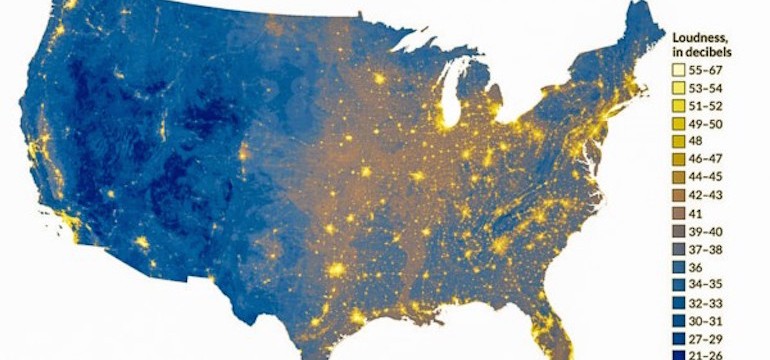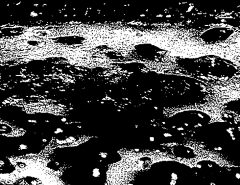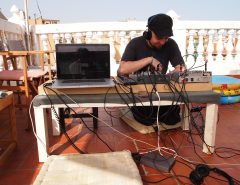Human-Made Noise and Nighttime Lighting
Craving some silence? Head (quietly) toward the blue regions on the map above. Based on 1.5 million hours of acoustical monitoring from places as remote as Dinosaur National Monument in Utah and as urban as New York City, scientists have created a map of noise levels across the country on an average summer day. After feeding acoustic data into a computer algorithm, the researchers modeled sound levels across the country including variables such as air and street traffic. Deep blue regions, such as Yellowstone National Park in Wyoming and the Great Sand Dunes National Park in Colorado, have background noise levels lower than 20 decibels—a silence likely as deep as before European colonization, researchers say.That’s orders of magnitude quieter than most cities, where noise levels average 50 to 60 decibels, scientists reported here today at the annual meeting of AAAS (which publishesScience). The National Park Service is using the map to identify places where humanmade noise is affecting wildlife—animals such bats and owls, whose ears are up to 20 decibels more sensitive than human ears, for example, are affected by humanmade noise because it drowns out the faint rustles of insects and rodents they need to hunt, they say.
Check out our full coverage of the AAAS annual meeting.





Leave a Reply
Lo siento, debes estar conectado para publicar un comentario.